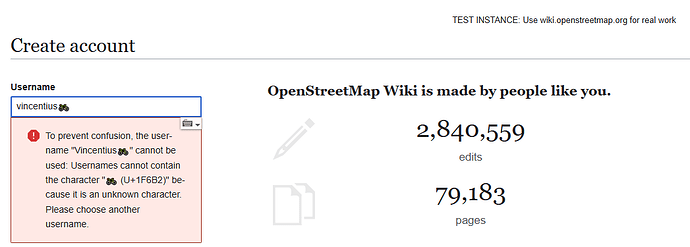The operations team has experimentally converted the test wiki to a different Unicode encoding. This is expected to fix various longstanding issues, such as the inability to insert emoji (and certain Chinese characters) into a wiki page in literal form without truncating it or triggering errors. They need help testing the results of the migration on the test wiki to iron out any bugs before running the same migration on this wiki. Please help test Unicode usage everywhere you can, not only page contents but also page titles, edit summaries, user names, and more, and report any problems like errors, truncated content, broken links, or missing search results. Thanks!
Hi,
test with emoji:
page content: User:Vincentius - OpenStreetMap Wiki
page titles: DE:Leaflet Simple Example mit Emoji 🐱🚀 - OpenStreetMap Wiki
edit summaries: User:Vincentius: Revision history - OpenStreetMap Wiki
do work
user name not:
Best regards
Specifically user names might be interesting to test for @amapanda_ᚐᚋᚐᚅᚇᚐ
As a reminder, we’re also interested in feedback about any functionality that normally works but is broken on the test wiki, even if you don’t fool around with exotic Unicode characters. Some breakage may be due to other experiments we’re running there, but some of it could be due to the character encoding version. We need to know just in case. We took the entire database contents and converted it to a new character encoding, which under ordinary circumstances would be pretty scary, let alone in a large MediaWiki installation.
This is coming from the AntiSpoof extension, which is also installed on the main wiki. The extension is designed to prevent malicious user name spoofing, like we’ve seen on the main website in the past. As far as I can tell, AntiSpoof doesn’t like characters in the Transport and Map Symbols Unicode block because they don’t belong to a particular script (as in Latin, Arabic, Glagolithic, etc.). Instead, they belong to Zyyy, which means an undetermined script.
If someone has a well-justified need to bypass the spoofing check, an administrator can bypass the check when creating an account on their behalf.
